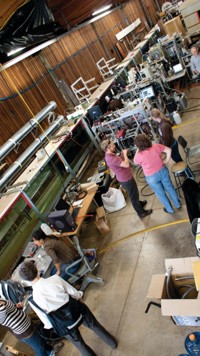Advertisement
Grab your lab coat. Let's get started
Welcome!
Welcome!
Create an account below to get 6 C&EN articles per month, receive newsletters and more - all free.
It seems this is your first time logging in online. Please enter the following information to continue.
As an ACS member you automatically get access to this site. All we need is few more details to create your reading experience.
Not you? Sign in with a different account.
Not you? Sign in with a different account.
ERROR 1
ERROR 1
ERROR 2
ERROR 2
ERROR 2
ERROR 2
ERROR 2
Password and Confirm password must match.
If you have an ACS member number, please enter it here so we can link this account to your membership. (optional)
ERROR 2
ACS values your privacy. By submitting your information, you are gaining access to C&EN and subscribing to our weekly newsletter. We use the information you provide to make your reading experience better, and we will never sell your data to third party members.
Environment
Reactions On Airborne Dust Produce Aerosols
Atmospheric Chemistry: Dust particles release hydroxyl radicals that lead to sulfuric acid and aerosol nucleation
by Jyllian Kemsley
December 10, 2012

Radicals released from the surface of airborne dust trigger formation of new aerosol particles in the atmosphere, according to a new study (Proc. Natl. Acad. Sci. USA, DOI: 10.1073/pnas.1212297109). These aerosols play key roles in precipitation, climate, and air quality.
Scientists poorly understand how new aerosol particles nucleate in the air, despite aerosols’ importance in the atmosphere: The particles may seed clouds, absorb or reflect sunlight, and cause respiratory and heart problems in people.
An international team led by Christian George, a research scientist at the Institute for Research on Catalysis and Environment in Lyon, France, now report one possible mechanism based on chemistry at the surface of dust particles. Other researchers had previously determined that light-driven reactions on dust particles containing titanium dioxide or iron(III) oxide produce hydroxyl radicals from water. These radicals can convert sulfur dioxide adsorbed onto the particles into sulfuric acid, which stays on the particles. Sulfuric acid is known to nucleate new aerosol particles, but only if it is not adsorbed on dust. George and his colleagues wondered if hydroxyl radicals could leave the dust particles and go on to initiate gas-phase chemistry with free sulfur dioxide.
To simulate such atmospheric conditions, the scientists shone light into a laboratory flow tube containing low concentrations of dust, along with water vapor and sulfur dioxide. As the team monitored particle concentrations inside the tube, they noticed levels increased over time instead of remaining constant. They also found that keeping the tube in the dark or removing the sulfur dioxide or water vapor led to no new particle formation.
Because new particles formed only in the light and with all of the ingredients present, the team thinks that the dust particles released hydroxyl radicals to the air. The radical species then converted sulfur dioxide into airborne sulfuric acid, which nucleated new particles. Further, the researchers hypothesize that low dust concentrations would be necessary for new particle nucleation; high dust concentrations would provide enough surface area for sulfuric acid to adsorb onto the dust, instead of nucleating aerosols.
George and colleagues believe they saw evidence for dust-initiated nucleation in field studies in China in 2009 and France in 2010. When levels of dust particles were high at those sites, few new aerosols formed in the air. But as dust concentrations fell, new particles formed.
In addition to the new paper, George presented the results on Dec. 6 at the American Geophysical Union meeting, in San Francisco.
The experimental results suggest an interesting mechanism, says James Smith, a research scientist at the National Center for Atmospheric Research in Boulder, Colo., and the field observations show that there are locations where the chemistry could be relevant. He anticipates that the work will inspire other researchers to follow particle formation by looking for and measuring airborne hydroxyl radicals and sulfuric acid.





Join the conversation
Contact the reporter
Submit a Letter to the Editor for publication
Engage with us on Twitter